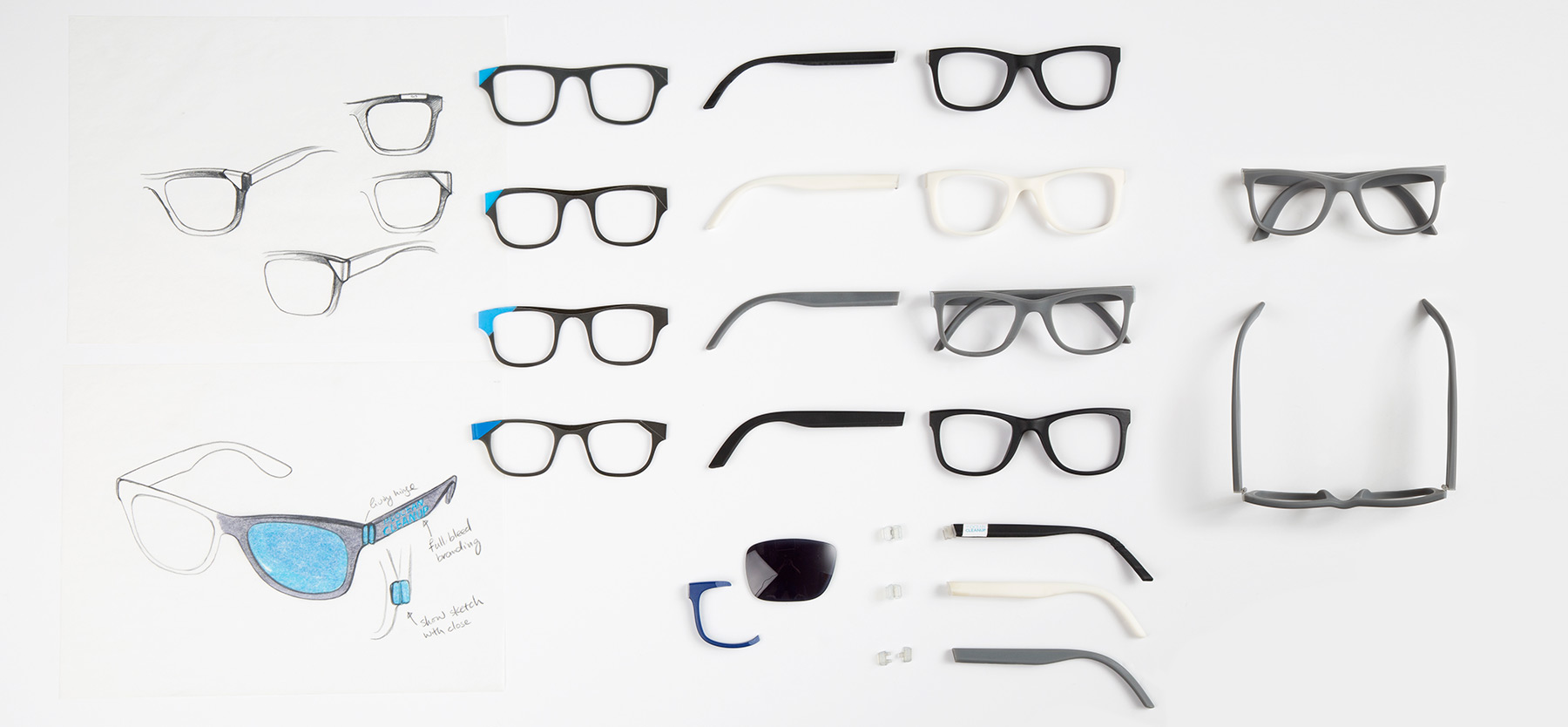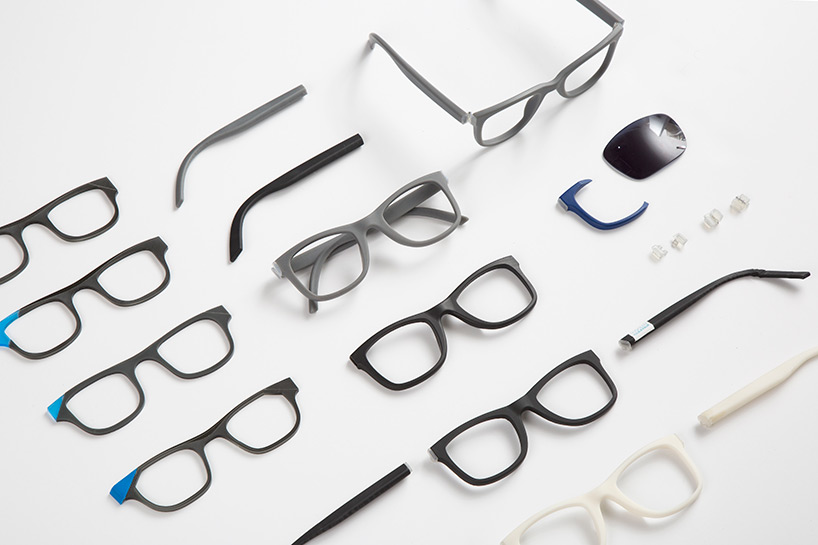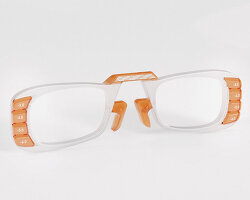the ocean cleanup — the dutch non-profit organization developing advanced technologies to rid the world’s oceans of plastic — has teamed up with designer yves béhar to release a limited edition line of sunglasses. designed by béhar and his team at fuseproject, the sunglasses are made from plastic waste that has been recovered from the great pacific garbage patch (GPGP), a collection of marine debris in the north pacific ocean. through a contribution of EUR/USD 199, all of which will go directly to the non-profit’s operations, supporters have the chance to help fund the ocean cleanup, which was nominated for THE DESIGN PRIZE 2019 in the category of social impact.
to learn more about the initiative, designboom spoke with yves béhar who discussed social responsibility, the design and development of the sunglasses, and the recovered plastic material’s future potential. read the interview in full below.

the product has been made with the first plastic catch during the ocean cleanup’s system 001/B campaign in the GPGP. when the campaign concluded, the plastic was returned to shore before being recycled at an unprecedented commercial scale. sunglasses were chosen as the first product to be made from the material for their durability and reminiscence of the oceans. designed by yves béhar and crafted by safilo, the frame is made with plastic certified by DNV GL, while the case is made with recycled material from ‘system 001’, also known as ‘wilson’, the first ocean cleanup system deployed in 2018.

all components, from the metal hinges to the polarized lenses, are designed to be easily taken apart and recycled if necessary. the sunglasses are now available on the ocean cleanup’s website for a contribution of EUR/USD 199. with only a limited amount of plastic from the GPGP currently available, availability is finite. the ocean cleanup says that different product lines will be explored in the future.

designboom (DB): how does the ocean cleanup’s mission align with your own creative thinking, and why was it personally important for you to be involved in the project?
yves béhar (YB): sustainability is a central mission at fuseproject — so many of the projects we work on have an element of sustainability and/or social responsibility, from smaller start-up style projects to large corporate efforts. with the ocean cleanup plastic it became clear that what is called ‘trash’, is actually a valuable material that can be used for complex as well as beautiful applications. the design effort became a way to prove this point: how could we design something that becomes an instant proof that what we throw away is a precious resource with great potential?

YB (continued): I was immediately attracted to the project because of its circular design — going full circle from trash to treasure by creating a product to help fund further cleanup — as well as the scale of manufacturing. some of the changes we can make as designers on mainstream consumption products have a great impact because of the sheer scale of manufacturing. boyan and I are aligned on the intrinsic value of the plastic we throw away, and the need to demonstrate how valuable this waste can be, so I was excited to raise awareness and be a part of a funding campaign for the ocean cleanup with the aim of helping the organization to realize their mission.

DB: during the development stages of the sunglasses, were there opportunities that the recovered plastic material afforded that became evident, or qualities that were particularly interesting to work with?
YB: first of all, I found the plastic to be beautiful with a unique texture and hand feel. we also worked within very strict parameters by following the steps laid out in the public traceability standard developed by DNV GL, the leading global certification body. the process reframes our role in addressing ocean plastics, where it can be redefined as an interesting resource and treated appropriately throughout its life cycle to become a sustainable material. during the development and brainstorm phase, we landed on sunglasses as the ideal personal item for people to wear and display support for this nonprofit.

DB: on the other hand, what challenges or limitations did you encounter in working the material?
YB: recycling this ocean plastic had never been done at a commercial scale before, but, together with a team of experienced partners at the ocean cleanup, we managed to turn it into a high-quality and safe material from which this limited first batch of products has been made.

DB: how does the design of the sunglasses seek to express the inherent beauty in the materials from which they’re made?
YB: together with the ocean cleanup team, we developed an approach that will allow people to really experience the quality and beauty of materials that come straight from the ocean and the unique material properties of the recovered plastic. this material became the inspiration to not only tell a very unique brand story, but that could also be iconic and instantly recognizable as coming from the ocean.

DB: what drove the aesthetic inspiration and form, and what signature details are incorporated into the design?
YB: the frame is made with plastic certified by DNV GL from the great pacific garbage patch. the metal hinge is clearly visible and expressed as it caps the temple and lens frame. the unique signature hinge also facilitates disassembly and recycling. the sunglasses’ case is made with the recycled material from system 001, also known as ‘wilson’, the first ocean cleanup system deployed in 2018. with end of life in mind, from the metal hinges to the polarized lenses, all components are designed to be easily taken apart and recycled again should this be necessary. sunglasses were chosen as the first product because the organization wanted to offer something that is durable and useful and reminds users of the beauty and importance of our oceans. wearing the sunglasses also becomes a badge of honor and support.

DB: can you envision the recovered plastic having applications beyond product design — such as architecture, fashion, technology…?
YB: we have learned a lot about the possibilities of the material during this first product development, and I look forward to continued iterations. it would be amazing to harness the plastic’s potential in grander scales and applications, as solutions for these oceans plastics should be plentiful and show the high value of this material we call ‘trash’.

































